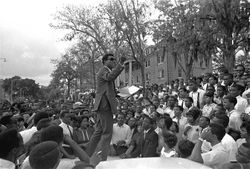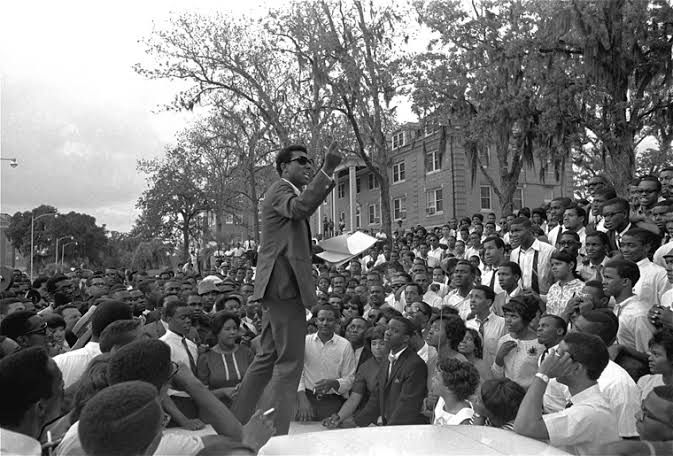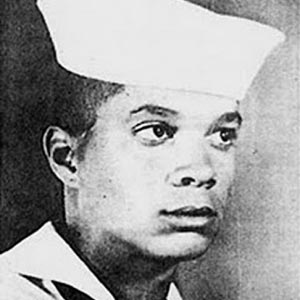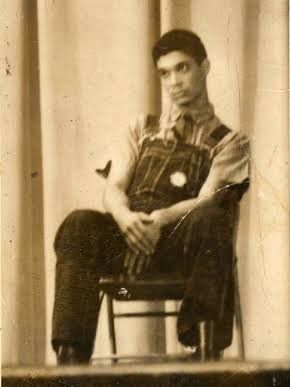In the winter of 1966, Younge was working as a vote registration volunteer at the Macon County courthouse. On 3rd January, Younge stopped at a service station to buy some cigarettes and use the toilet. When Younge discovered that African Americans did not use the same facilities as whites, he complained to the owner, Marvin Segrest. During the argument that took place about the Jim Crow facilities, Segrest picked up his gun and shot him dead.
Younge was the fifth civil rights worker who had been killed in Alabama in 12 months. After a protest march organised by students at the Tuskegee Institute, Segrest was arrested and charged with murder. At the end of his trial, an all-white jury found Segrest not guilty of murder.
bio from:
http://www.spartacus.schoolnet.co.uk/USAyounge.htm
He was born on November 17, 1944 in Tuskegee, Alabama. His parents were educated professionals; Samuel Sr. was an occupational therapist, and Younge’s mother, Renee, was a schoolteacher. Unlike most black men in Macon County, Sammy and his younger brother, Stephen (“Stevie”), grew up with middle class privileges and comforts. Between September 1957 and January 1960 he attended Cornwall Academy, a college preparatory school for boys in Great Barrington, Massachusetts, a town famous as the birthplace of W.E.B. DuBois. Younge graduated from Tuskegee Institute High School in 1962 and enlisted in the U.S. Navy. Soon after his enlistment Younge served on the aircraft carrier USS Independence during the Cuban Missile Crisis when the vessel participated in the United States blockade of Cuba. After a year in the Navy, Young developed a failing kidney that had to be surgically removed. He was given a medical discharge from the Navy in July 1964. He returned to Tuskegee and worked at the Tuskegee Veteran’s Hospital for a few months before entering the Tuskegee Institute in January 1965 as a freshman. In March 1965, he took part in the Selma-to-Montgomery Marches in support of voting rights. That participation led to his joining the Student Nonviolent Coordinating Committee (SNCC) and the Tuskegee Institute Advancement League (TIAL), groups that led voter registration drives for African Americans, and worked to help desegregate public facilities, recreational facilities, and schools. Younge also traveled to Mississippi later in 1965 to help SNCC and the Mississippi Freedom Democratic Party register black voters. His murder in January 1966 at the Standard Oil Gas Station by its elderly white night attendant, Marvin Segrest, came as he was involved in a voter registration campaign in Macon County. It sparked a variety of protests. Three days after his murder SNCC called a press conference in which it declared its opposition to the war in Vietnam. His death was highlighted as an example of fighting for freedom abroad that was denied at home. There were protests in Tuskegee when white county officials initially refused to indict Segrest and later when an all-white jury, in an overwhelmingly black county, took only one hour and ten minutes to acquit Segrest in his December 1966 trial. SNCC and local black leaders used his death (in combination with the 1965 Voting Rights Act) to inspire a rise in black political participation in the region. By 1970, the majority of office holders in Macon County and other predominately black central Alabama counties were African American. Today, his name is carved on the Civil Rights Memorial in Montgomery, Alabama, a tribute to the 40 people who were slain between 1954 (the year the U.S. Supreme Court banned school segregation) and 1968 (the year of Martin Luther King Jr.’s assassination).
Contributor: SOMEONEILOVE (47848345)
In the winter of 1966, Younge was working as a vote registration volunteer at the Macon County courthouse. On 3rd January, Younge stopped at a service station to buy some cigarettes and use the toilet. When Younge discovered that African Americans did not use the same facilities as whites, he complained to the owner, Marvin Segrest. During the argument that took place about the Jim Crow facilities, Segrest picked up his gun and shot him dead.
Younge was the fifth civil rights worker who had been killed in Alabama in 12 months. After a protest march organised by students at the Tuskegee Institute, Segrest was arrested and charged with murder. At the end of his trial, an all-white jury found Segrest not guilty of murder.
bio from:
http://www.spartacus.schoolnet.co.uk/USAyounge.htm
He was born on November 17, 1944 in Tuskegee, Alabama. His parents were educated professionals; Samuel Sr. was an occupational therapist, and Younge’s mother, Renee, was a schoolteacher. Unlike most black men in Macon County, Sammy and his younger brother, Stephen (“Stevie”), grew up with middle class privileges and comforts. Between September 1957 and January 1960 he attended Cornwall Academy, a college preparatory school for boys in Great Barrington, Massachusetts, a town famous as the birthplace of W.E.B. DuBois. Younge graduated from Tuskegee Institute High School in 1962 and enlisted in the U.S. Navy. Soon after his enlistment Younge served on the aircraft carrier USS Independence during the Cuban Missile Crisis when the vessel participated in the United States blockade of Cuba. After a year in the Navy, Young developed a failing kidney that had to be surgically removed. He was given a medical discharge from the Navy in July 1964. He returned to Tuskegee and worked at the Tuskegee Veteran’s Hospital for a few months before entering the Tuskegee Institute in January 1965 as a freshman. In March 1965, he took part in the Selma-to-Montgomery Marches in support of voting rights. That participation led to his joining the Student Nonviolent Coordinating Committee (SNCC) and the Tuskegee Institute Advancement League (TIAL), groups that led voter registration drives for African Americans, and worked to help desegregate public facilities, recreational facilities, and schools. Younge also traveled to Mississippi later in 1965 to help SNCC and the Mississippi Freedom Democratic Party register black voters. His murder in January 1966 at the Standard Oil Gas Station by its elderly white night attendant, Marvin Segrest, came as he was involved in a voter registration campaign in Macon County. It sparked a variety of protests. Three days after his murder SNCC called a press conference in which it declared its opposition to the war in Vietnam. His death was highlighted as an example of fighting for freedom abroad that was denied at home. There were protests in Tuskegee when white county officials initially refused to indict Segrest and later when an all-white jury, in an overwhelmingly black county, took only one hour and ten minutes to acquit Segrest in his December 1966 trial. SNCC and local black leaders used his death (in combination with the 1965 Voting Rights Act) to inspire a rise in black political participation in the region. By 1970, the majority of office holders in Macon County and other predominately black central Alabama counties were African American. Today, his name is carved on the Civil Rights Memorial in Montgomery, Alabama, a tribute to the 40 people who were slain between 1954 (the year the U.S. Supreme Court banned school segregation) and 1968 (the year of Martin Luther King Jr.’s assassination).
Contributor: SOMEONEILOVE (47848345)
Sponsored by Ancestry
Advertisement
Advertisement






